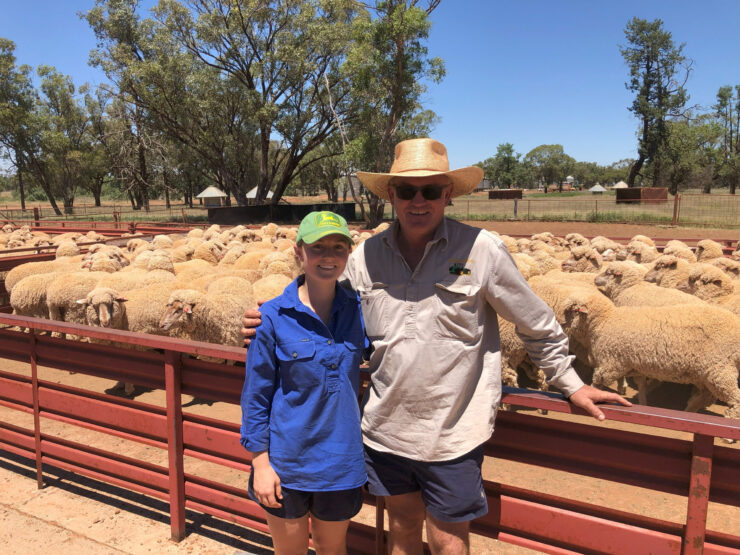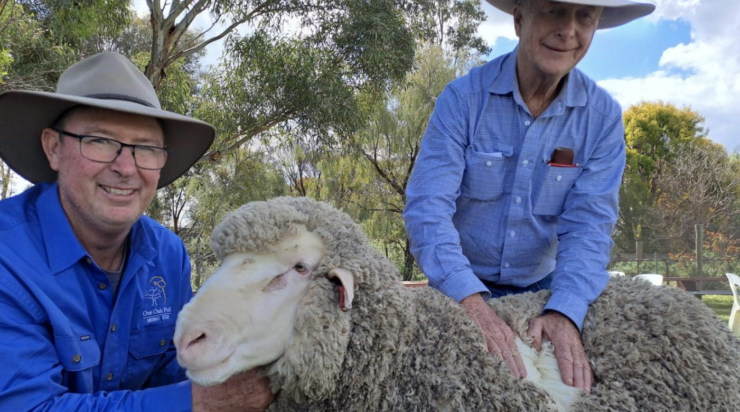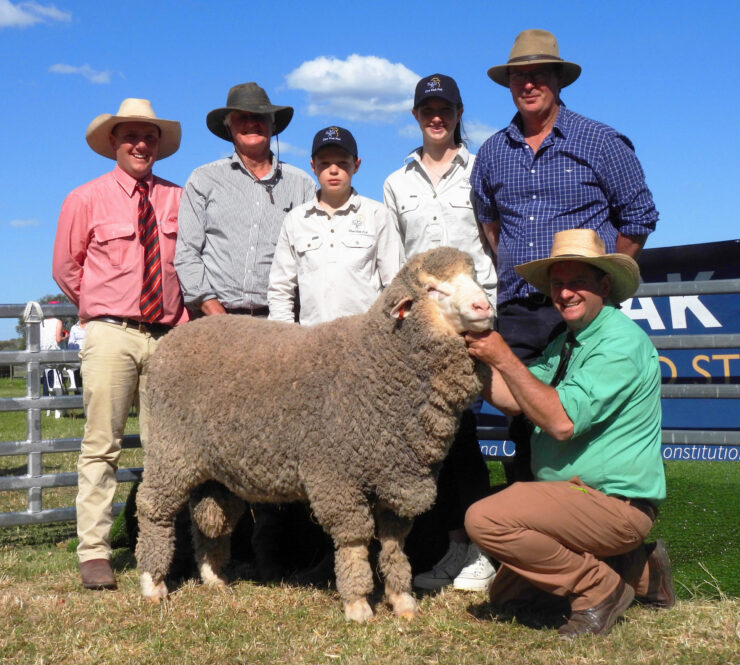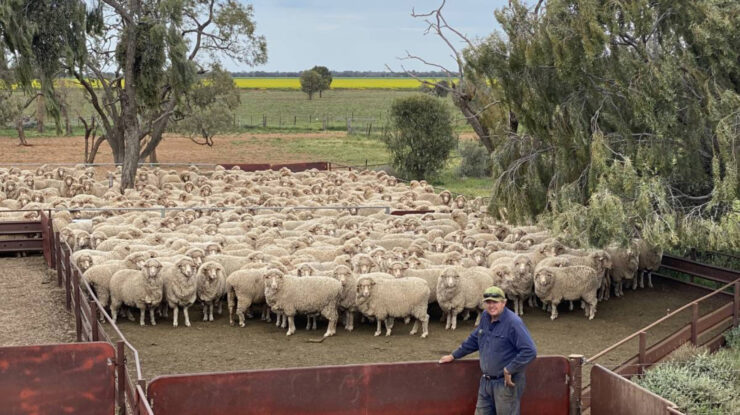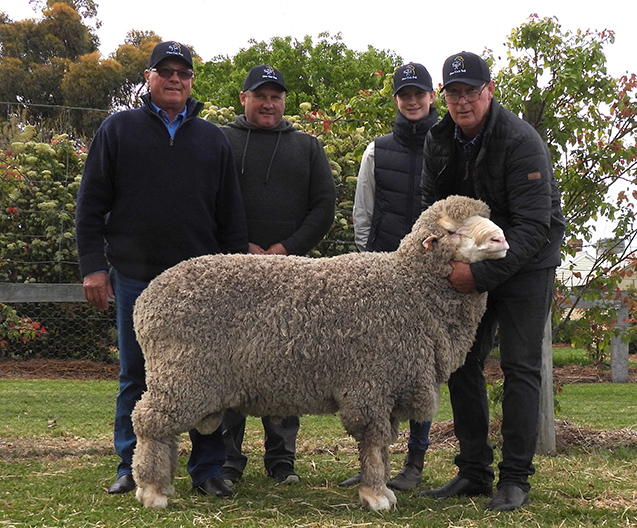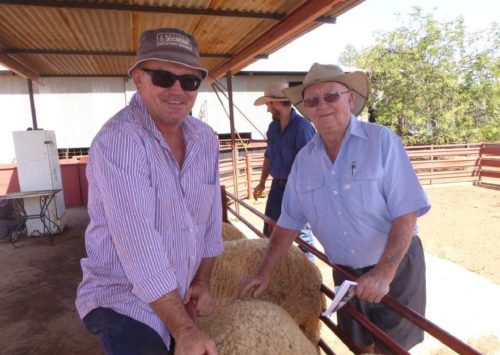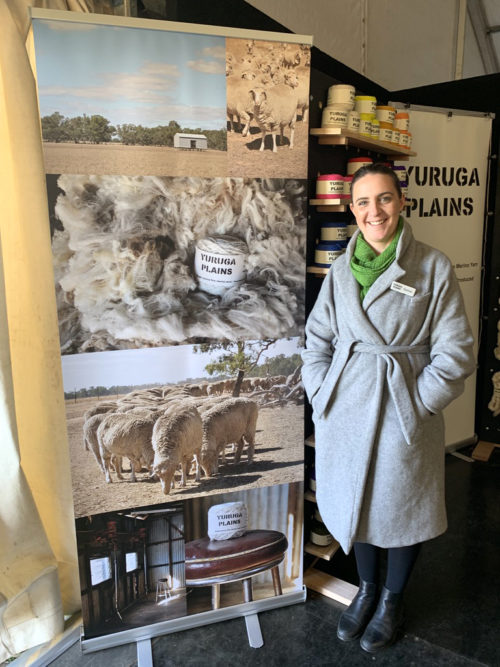Article courtesy of the Land, Elka Denvey
For the third year in a row Darren and Gale Clarke, Barmedman, have taken home the top spot at the West Wyalong Flock Ewe Competition.
Despite a challenging season for producers, five high quality entrants from across the region were judged by Ian Cameron of The Yanko, Jerilderie and Alex Karsten of Kiawarra Merino stud, Weethalle, along with associate judges Lachlan Kitto, Tallimba and George Ridley, Girral.
Classed by Michael Elms, the Clarke’s winning July/August 2022 drop One Oak blood ewes were the youngest in the competition.
On average, the flock ewes had a 19.4-micron fleece with a 41 newtons per kilotex staple strength and cut 5.59 kilograms of wool per head per year.
The flock also achieved a 95 per cent lambing and 70pc yield with a 32pc culling rate.
Judge Ian Cameron said the yield was visible with a bright and white wool.
“They are structurally very sound and squared in the backside when you stand behind them,” he said.
“The culling rate shows, and it is good to keep that pressure on to keep a tight flock.
“With great skin quality, they’re an uncomplicated sheep that still have plenty of cut.”
Judge Alex Karsten said the wool was well presented.
“The staple length is excellent with a nice bright wool, and good crimp,” he said.
Coming in as the runner-up was Jason and Leonie Ridley, Grenoble, Girral, with their flock of Haddon Rig blood ewes classed by Andy McLeod.
On average, the 1100 breeding ewes had a 19.6-micron fleece and cut 5.5kg of wool per head per year.
Despite extremely difficult and isolating wet conditions which saw a 78pc lambing, the flock achieved a 78pc yield with a culling of 34pc.
“I’m aiming to produce ewes with a free growing long staple length that eases shearing and handling,” Mr Ridley said.
“With all of the water we’ve had on-property, the pasture quality has been hopeless so they’ve had a bit of grain, but considering what conditions they’ve been through I’m really happy with them.”
Judge Alex Karsten said the ewes were well balanced with a good staple length.
Judge Ian Cameron add that there were a few minor structural issues.
“They’re just little ones around classing, the odd foot and hock but they’re small things that can easily be remedied with the ram source,” he said.
Overall third place was awarded to Gerard, Caroline, Glen and Maureen O’Brien, Caloola, Bellarwi, with their Pooginook blood flock classed by Bruce Baker, who died earlier this year.
On average, the O’Brien’s February shorn 2000 flock breeding ewes had a 18-micron fleece and cut 7.5kg of wool per head, per annum.
The flock had a 115pc lambing and 72pc yield with a culling of 22pc.
John and Leanne Staniforth, Golden Vale, Tallimba, received the Encouragement Award.
Kitto Pastoral Co, East Yalgogrin, Tallimba, also participated in the competition.


